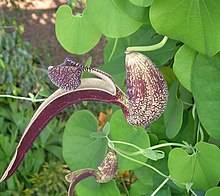Arrowwood (Viburnum dentatum) is a versatile and captivating shrub that graces landscapes across various regions. Known for its striking appearance and numerous practical uses, this plant has a lot more to offer than meets the eye. Here are five fascinating facts about arrowwood:
1. Native Beauty and Diversity:
Arrowwood is native to North America and can be found growing in a range of habitats, from woodlands and meadows to wetlands and stream banks. Its adaptability to various environments contributes to its popularity in gardens and urban landscapes. The shrub's defining features include its arching branches, dark green foliage, and clusters of creamy white flowers that bloom in late spring. These flowers attract pollinators like bees and butterflies, enhancing biodiversity in the surrounding ecosystem.
2. Berries for Birds and Wildlife: One of the most compelling aspects of arrowwood is its production of attractive blue-black berries. These berries not only add visual interest to the shrub but also serve as a crucial food source for birds and various wildlife species. Birds like cedar waxwings and American robins eagerly devour the berries, aiding in seed dispersal and promoting the growth of new plants. This ecological role showcases arrowwood's significance in maintaining healthy ecosystems.
3. Historical and Traditional Uses: Arrowwood's name is derived from its historical use by Native American tribes. The shrub's strong, straight branches were used to craft arrows, showcasing the resourcefulness of indigenous communities. Beyond weaponry, arrowwood had medicinal applications, with Native Americans using different parts of the plant to address ailments such as fevers and digestive issues. Learning about these traditional uses adds a layer of cultural richness to the plant's story.
4. Versatile Landscape Plant: Arrowwood's versatility extends beyond its ecological contributions; it's also a popular choice for landscaping. Its multi-stemmed growth habit makes it ideal for creating hedges, screens, or natural boundaries. The shrub's vibrant fall foliage, which can range from shades of red to purple, adds a burst of color to landscapes before winter sets in. Furthermore, arrowwood's adaptability to different soil types and sunlight conditions makes it a resilient and low-maintenance addition to gardens.
5. Conservation and Restoration: Given its value to wildlife and ecosystems, arrowwood has garnered attention in conservation and restoration efforts. Planting native species like arrowwood can help restore natural habitats and support declining bird populations. Invasive species often outcompete native plants, disrupting local ecosystems. By incorporating arrowwood and other native plants in landscaping and restoration projects, we can contribute to the preservation of regional biodiversity.
In conclusion, arrowwood is more than just a visually appealing shrub. Its deep-rooted history, ecological importance, and versatile characteristics make it a standout choice for both gardeners and conservationists. By appreciating the many facets of arrowwood, we can enhance our understanding of native flora and contribute to the health of the environments we inhabit.


